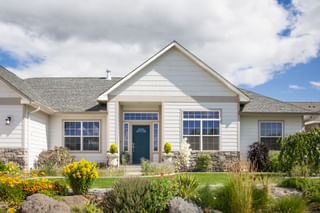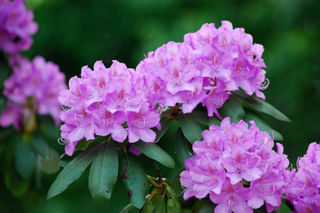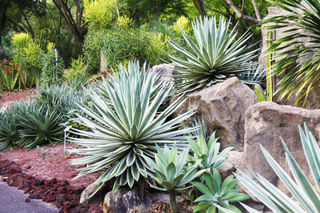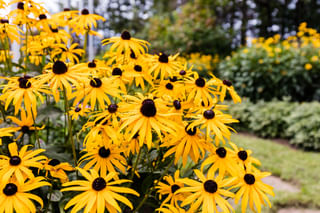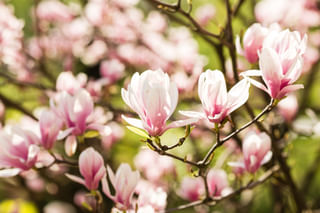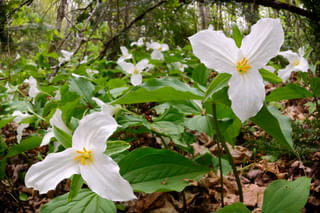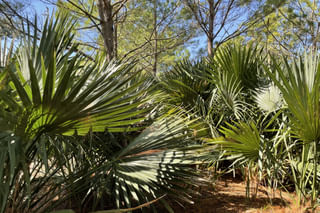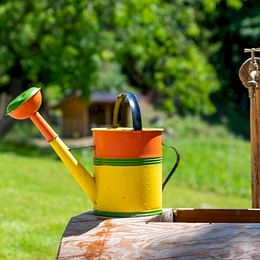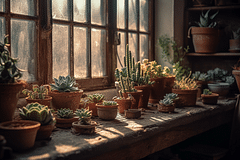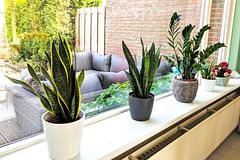What are the easiest native plants for your garden in the USA?
In this plant care guide, we're going to look at why you should consider creating a garden with native plants and which native plants are the easiest to care for in your garden in the USA!
Lawns are a popular landscaping option for many reasons, but the upkeep can be exhausting and expensive. With so much work needed just to keep them green and healthy-looking all year round, is it worth investing time or money into?
An easier and cheaper way to create a great garden is to use native plants that thrive here locally, like trees, bushes, and native grasses. These native plants typically need less watering and maintenance than non-native plants. Plus, they provide valuable habitats for native wildlife. This makes native plants the perfect plants to add to your garden if you're a new gardener or simply don't have a lot of time and still want to bring nature closer to home!
In this plant care guide, we're going to look at some of the easiest native plants for the different parts of the USA. The US is a large country, so it's impossible to give you a list of the easiest plants for the whole country, as the natural habitats of each part of the country are unique.
These are the topics we're going to look at:
Let's dive right in and explore the world of native gardens and an alternative way to support native wildlife!
What are the benefits of native plants in your garden?
Gardening is a popular pastime for many people, and one of the best ways to create a beautiful and sustainable garden is to use native plants. Native plants are those that are naturally found in your area, and they have evolved over time to be well-adapted to the local climate and soil conditions. As a result, native plants are typically hardier and more drought-tolerant than non-native species. They also provide valuable habitat for native wildlife, including birds, bees, and butterflies. By choosing native plants for your garden, you can create a beautiful space that is also good for the environment.
Which plants are the easiest to grow and maintain for novice gardeners in the USA?
For novice gardeners in the USA, some of the easiest plants to grow and maintain are vegetables that are native to the country. These include tomatoes, potatoes, corn, and beans. The benefits of growing these vegetables are numerous. They are relatively low-maintenance, meaning that they do not require a lot of time or effort to keep them healthy. In addition, they are highly sustainable, as they can be grown without the use of pesticides or other harmful chemicals. As a result, they are kinder to the environment and easier on the wallet. With a little time and care, anyone can enjoy the satisfaction of harvesting their own homegrown produce.
How do you choose the right native plant for your specific climate and region?
Before you choose a native plant for your garden, it is important to consider your climate and region. In the United States, there are gardens in every region that are home to native plants. These plants have adapted to the specific climate and conditions of their region, and they can provide a variety of benefits for your garden. Let's see what the most common native plants in your area are!
What are the easiest native plants for your garden in the Pacific Northwest?
The Pacific Northwest is a region that includes Washington, Oregon, and Idaho. Some easy native plants to grow in this region include:
- Rhododendrons
- Columbines
- Trilliums
- False Solomon's seal
- Sword fern
The Pacific Northwest has a temperate climate, with mild winters and summers. The region also has a lot of rainfall, which makes it an ideal place for growing these native plants. These plants are well-adapted to the region's climate and soil conditions, and they will thrive in your garden.
What are the easiest native plants for your garden in the Southwest?
Some easy native plants to grow in the Southwest include:
- Cacti
- Saguaro cacti
- Barrel cactus
- Prickly pear cactus
- How do you take care of a Yucca?
The natural climate in the southwest is one that is hot and dry. This means that native plants that thrive in this environment grow deep roots to find water and are very drought tolerance. This are is perfect for growing cacti and succulents outdoors.
What are the easiest native plants for your garden in the Midwest?
Some easy native plants to grow in the Midwest include:
- Black-Eyed Susan
- Dogwoods
- Cardinal Flower
- Trilliums
- False Solomon's seal
The Midwest has a climate of extremes. The region has hot, humid summers and cold, snowy winters. This variety of weather means that a large variety of plants could grow in the Midwest. The only plants that might not do too well is drought-loving plants, because it does rain quite a bit, which will lead to root rot on these plants.
What are the easiest native plants for your garden in the South?
Some easy native plants to grow in the South include:
- Magnolias
- Dogwoods
- Bottlebrush buckeye
- Redbuds
- Pussy willows
The natural climate in the south is perfect for growing a variety of plants, including native plants. The South has multiple different climate, but in general, it's hot. In the west, it'll be very dry, while in the east it's humid. In the western part, you can compare the ideal native plants to the plants that were listed for the Southwest: succulents and cacti. In the east, you'll find more humidity-loving plants like Magnolias, Dogwoods, and Bottlebrush Buckeye.
What are the easiest native plants for your garden in the Northeast?
Some easy native plants to grow in the Northeast include:
- Wild Anemone
- Maidenhair Fern
- Trillium
- American Coralbells
- Eastern Bluestar
The natural climate in the north east is wet and humid. This makes it a perfect environment for growing ferns, mosses, and other moisture-loving plants. There are many easy-to-grow natives that thrive in this climate, including Wild Anemone, Maidenhair Ferns, an Trilliums. These plants can be added to a garden to create a lush, green oasis that is native to your region.
What are the easiest native plants for your garden in the Southeast?
Some easy native plants to grow in Southeast include:
- Palms
- Royal palms
- Coconut palms
- Sabal palms
- Mango trees
- Hibiscus
The climate in the southeast is mostly humid subtropical, with hot, humid summers and mild winters. The region also deals with tropical storms and hurricanes. This makes it an ideal climate for a variety of native plants, including those that thrive in tropical conditions, such as Palms, Mango trees, and Hibisci.
What are some tips for caring for native plants in your garden?
Native plants are perfectly adapted to your local climate and soil, so they need less water and fertilizer than non-native plants. Here are a few tips for planting and caring for native plants:
- Choose the right location. Native plants vary in their light and moisture requirements, so make sure to select a spot in your garden that will meet the needs of the specific plant you're growing.
- Prepare the soil. To give your native plant a head start, loosen the soil and add organic matter before planting. This will help the roots to establish themselves more quickly.
- Water deeply and infrequently. Once your plant is established, it will need less water than a non-native plant. The weather should give the plant everything it needs to thrive in your garden, you don't need to do anything special.
- Don't over-fertilize. Too much fertilizer can damage native plants, so use it sparingly or not at all. If you do need to fertilize, choose an organic option that won't harm the environment.
With proper care, native plants can thrive in your garden with minimal effort on your part!
Are there any potential problems with using too many native plants in your garden?
Although native plants are well-adapted to the local climate and provide a variety of benefits for wildlife, gardeners should be aware of the potential problems that can arise from using too many native plants in their garden.
One issue is that native plants can become invasive if they are not kept in check. This is especially true of fast-growing plants that produce a lot of seeds. Without regular maintenance, these plants can quickly take over the garden, crowding out other plant life.
Another potential problem is that native plants may not provide the same level of color and interest as non-native plants. Gardeners who are looking for a more colorful display may be disappointed if they rely too heavily on native plants.
Finally, gardeners should be aware that some native plants can be poisonous, so it is important to consult a reliable source before adding them to the garden. Despite these potential problems, native plants can be a valuable addition to any garden, providing food and habitat for local wildlife.
Conclusion
In conclusion, the benefits of native plants in your garden are many and varied. They are easy to grow and maintain for novice gardeners in the USA, they require less water and fertilizer than other types of plants, and they provide valuable habitat for local wildlife. When choosing native plants for your garden, be sure to select those that are well-suited to your climate and region. With a little care and attention, you can enjoy a beautiful and sustainable native plant garden for years to come.
Share this guide with your friends and family to help them take care of a low-maintenance, cheap, and above all, beautiful native garden!
Thank you for reading this post! I hope it helps you to keep your plants healthy and beautiful! If you're looking for more guides on specific plants, you can always request a plant guide to get a guide for the plant you have trouble with.
Test your plant care knowledge
Quiz completed!
Want to learn more? Sign up for my newsletter to receive free tips in your inbox!
Sign up now!